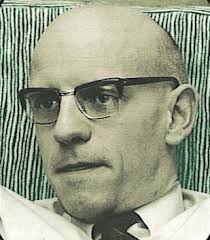These days we are constantly bombarded with the phrase: “Fake News! Fake News!” In the midst of it all, I cannot help but think of Michel Foucault. It seems others have thought of him too—but for strikingly different reasons. Some have pointed out that like the postmodernist school of thought, which Foucault was a part of, the concept of truth is malleable for President Trump. These commentators argue that Trump’s disregard for factual information and his inclination to question the sincerity of settled knowledge, follows the postmodernist assertion that truth is not discovered, but created.[1] Yet, as I see it, anyone who claims that Trump and Foucault seamlessly align on some kind of ideological plane have missed the point of Foucault’s philosophy entirely.
cultural history
Revolutionary Style: A Review of Caroline Weber’s Queen of Fashion
For decades, scholars have attempted to capture the circumstances that led up to the French Revolution. In The Coming of the French Revolution, for instance, Georges Lefebvre explains the causes of the French Revolution with a socioeconomic interpretation. In particular, Lefebvre argues that the rising dominance of the bourgeoisie produced the political turmoil of the revolution.[1] In other works, scholars, such as Francois Furet, Robert Darnton, and Keith Michael Baker, underscore the importance of political ideologies and culture for understanding the causes of the revolution.[2] Still others historians, such as Timothy Tackett, contend that the ineptitude of the royal family also helped to bring about the war. Tackett, for example, insists that the salacious and careless actions of the royal family before and during the war undermined the public’s perception of the family as a symbol of sacred authority.[3]
Similar to Tackett’s analysis, Caroline Weber also draws attention to the significance of the royal family in Queen of Fashion: What Marie Antoinette Wore to the Revolution.[4] The central aim of Weber’s study is to show how Marie Antoinette used the appeal of court fashion to exert political power. Through a comparison of Marie Antoinette to her famous ancestor, Louis XIV, Weber argues that the queen “identified fashion as a key weapon in her struggle for personal prestige, authority, and sometimes mere survival.”[5] In all, Weber concludes that Marie Antoinette fought her political adversaries with style.
Mad Men and the History of Advertising in America
In the episodes leading up to the Mad Men series finale, the show’s foremost character, the ever charismatic and manipulative Don Draper, who also happens to be the embodiment of the mid-twentieth-century advertising man, had been on a whirlwind Jack Kerouac-esque trip across America. Throughout this trip, we watched Don shed his personal possessions: for instance, he gave his car to a rookie con artist and his former wife’s wedding ring to his pseudo niece Stephanie. By the end, all he had was a tattered envelop full of money. By this time, Don had also found himself at a Esalen-like retreat facility in California where he experienced what appeared to be an emotional breakthrough.

